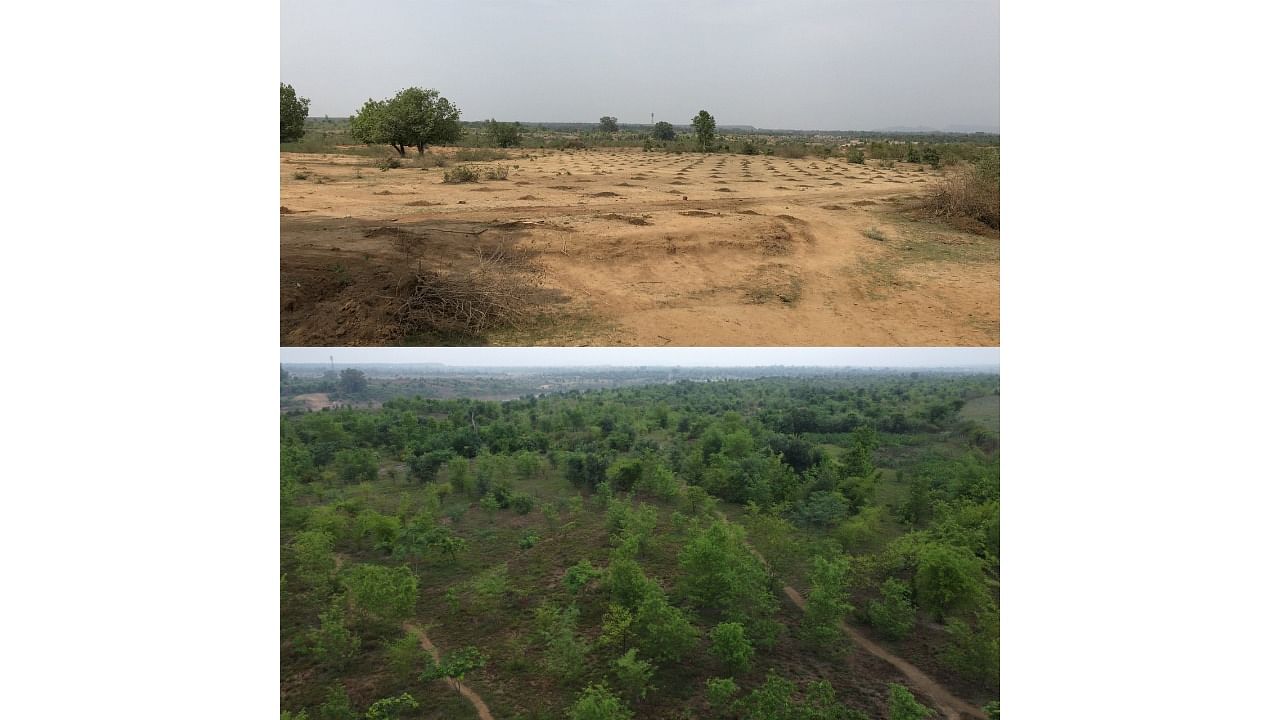
The Corbett Foundation (TCF), one of the leading conservation organisations in India, handed over around 80 hectares of restored forest plots to the North Shahdol Forest Division of the Madhya Pradesh Forest Department.
This would go a long way in the wildlife conservation programme.
The formal handover took place on 29 July 2022 coinciding with International Tiger Day.
In collaboration with Madhya Pradesh Forest Department, TCF initiated its ‘forest habitat restoration programme’ in 2018 with the CSR support of Jet Privilege Pvt. Ltd.
The degraded forest patches were taken up for restoration by planting around 40,000 saplings of various indigenous tree and bamboo species, with the involvement of local villagers, to recreate the habitat for tigers and their prey species.
The selected plots were cleared of invasive weeds (such as Lantana camara) and the plantation was protected using chain-linked fencing to prevent free livestock grazing and trespassing. The plantation sites were regularly monitored and maintained by the local community members appointed for the purpose.
In five years, the results have been quite encouraging and this successful model has shown a way ahead in restoring degraded forest landscapes on a large scale.
“With the visible success of 80 hectares, TCF and North Shahdol Forest Division have collaborated to take up another 100 hectares for forest restoration in Masira village, Range Jaisinghnagar. The work on this has begun in 2022 and is being supported by Axis Bank Ltd,” said TCF Director Kedar Gore.
Under the Bonn Challenge, India needed to honour its commitment of restoring 13 million hectares of degraded land by 2020 and an additional 8 million hectares by 2030.
As per the National Forest Policy, 1988, India aimed to bring 33 per cent of its geographical area under forest cover by 2022. However, as per the India State of Forest Report, 2021, the total forest area in India stands at 7,13,789 sq.km. which is just 21.71 per cent of the country’s geographical area.
Therefore, efforts such as these, have demonstrated a replicable model of forest restoration not just across central India but most of peninsular India.
The Central Indian Landscape (CIL) has been recognized as a global priority landscape for tiger conservation and holds more than 40% of India’s total tiger population.
The Bandhavgarh Sanjay-Dubri landscape (BSDL) is a part of the CIL and spreads over an area of around 22,000 sq. km. Bandhavgarh Tiger Reserve connects to Sanjay Dubri Tiger Reserve through ‘tiger corridors’ connecting North Shahdol Forest Division. This acts as a dispersal linkage or ecological corridor that facilitates the movement of tigers between these two tiger reserves.
The BSDL connects with Guru Ghasidas National Park in Chhattisgarh and together harbours 126-156 tigers. This landscape is also connected with Palamau Tiger Reserve in Jharkhand and has the potential to accommodate the increasing tiger population of Central India.